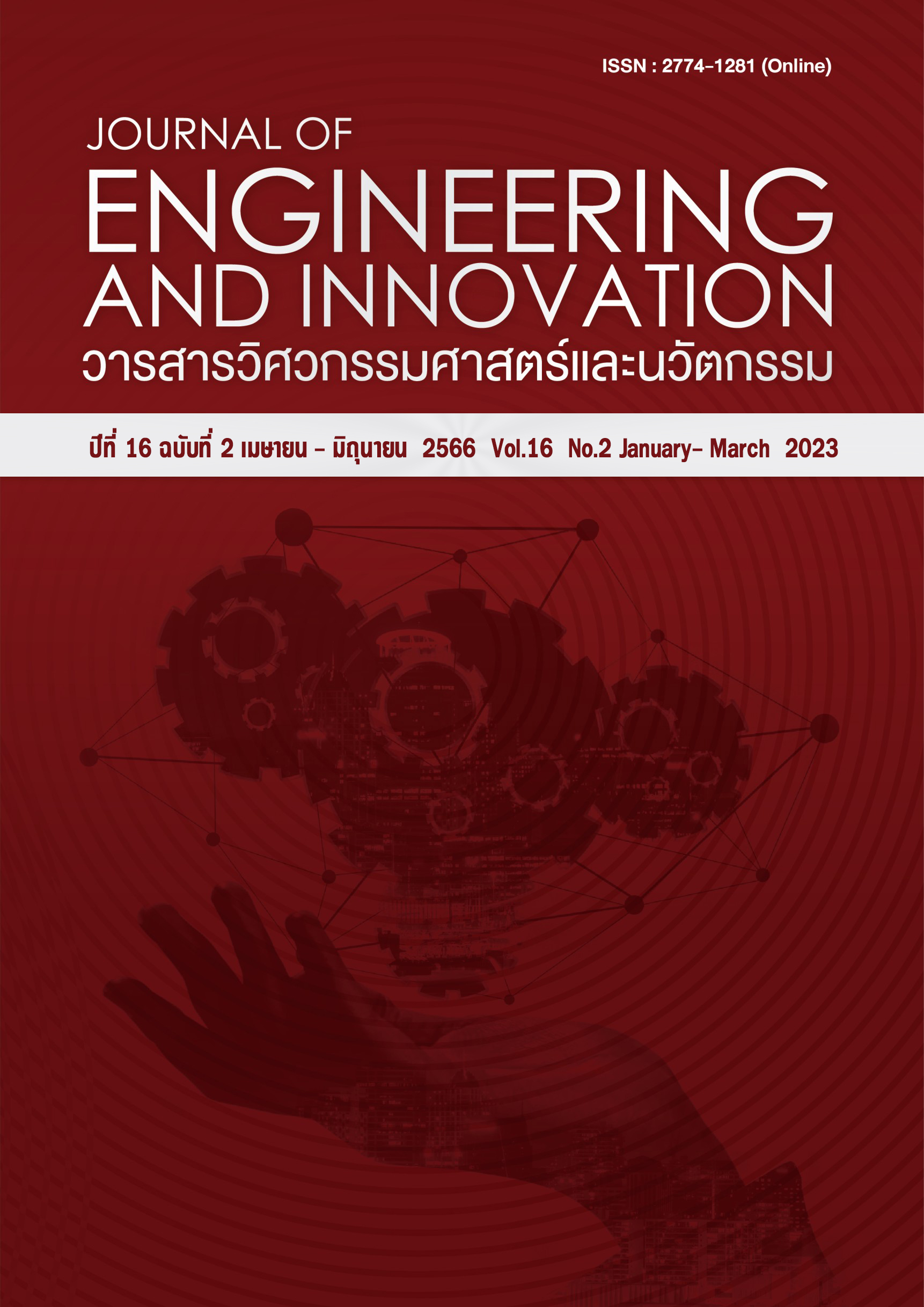Properties analysis of pellets fuel from sewage sludge and biomass for renewable energy
Main Article Content
Abstract
Renewable energy policies have driven the wood pellet and biofuel market over the last decades worldwide. Therefore, the pelletization of industrial waste and agricultural waste is beneficial for storage, logistics, and also for application as biofuel. The objective is to study the thermal properties, fuel pellet durability, exhaust gas composition from the combustion of fuel pellets, and the economic return of fuel pellet usage from sewage sludge and biomass (rice straw and sawdust). The results showed that the fuel pellets extruded from wastewater sludge consisted mainly of water. Therefore, they have a calorific value (12.56 MJ/kg) and durability lower than the two biomass pellets (89.0%). However, it is still in the range of fuel properties that can use as fuel and can store for the long term. Moreover, the flue gas composition from the pellet combustion was analyzed. The result indicated that the gas composition of the pellets fuel from wastewater sludge was similar to that of the two biomass pellets fuel and was within the standard value. Still, the SO2 value was slightly higher than the benchmark. In considering the economic cost, it was found that the use of pellets from wastewater sludge was the most cost-effective, with a total cost savings of 15,657.80 baht/year, a total cost savings rate of 59.58%, NPV 48,328.03 baht, IRR 31.19%, B/C 144.64% and a payback period of 3.00 years. Therefore, utilizing sewage sludge for waste to energy is an excellent process to manage this waste because it can reduce waste disposal costs and also use as an environmentally friendly alternative fuel.
Article Details
References
Ersel Y, Małgorzata W, Selin A. Co-pelletization of sewage sludge and agricultural wastes. Journal of Environmental Management. 2018; 216:169-175.
Longbo Jiang, Jie Liang, Xingzhong Yuan, Hui Li, Changzhu Li, Zhihua Xiao, Huajun Huang, Hou Wang, Guangming Zeng. Co-pelletization of sewage sludge and biomass: The density and hardness of pellet. Bioresource Technology. 2014; 166:435-443.
Hui Li, Long-Bo Jiang, Chang-Zhu Li, Jie Liang, Xing-Zhong Yuan, Zhi-Hua Xiao, Zhi-Hong Xiao, HouWang. Co-pelletization of sewage sludge and biomass: The energy input and properties of pellets. Fuel Processing Technology. 2015; 132:55-61.
Lu Suna, Minoru Fujii, Tomohiro Tasaki, Huijuan Dong, Satoshi Ohnishid. Improving waste to energy rate by promoting an integrated municipal solid-waste management system. Resources, Conservation & Recycling. 2018; 136: 289-296.
Anna Grobelak, Anna Grosser, Małgorzata Kacprzak, Tomasz Kamizela. Sewage sludge processing and management in small and medium-sized municipal wastewater treatment plant-new technical solution. Journal of Environmental Management. 2019; 234:90-96
วิภารัตน์ ชัยเพชร. การบำบัดน้ำเสียจากอุตสาหกรรมอาหารทะเลกระป๋องโดยใช้กระบวนการหมักแบบไร้อากาศสองขั้นตอนในถังสร้างกรดแบบไร้อากาศและถังปฏิกรณ์แบบยูเอเอสบี. [วิทยานิพนธ์]. สงขลา: มหาวิทยาลัยสงขลานครินทร์; 2551
กรมโรงงานอุตสาหกรรม. คู่มือการจัดการกากอุตสาหกรรม. กรุงเทพฯ: กระทรวงอุตสาหกรรม; 2558.
กรมพัฒนาพลังงานทดแทนและอนุรักษ์พลังงาน. รายงานฉบับสมบูรณ์ การศึกษาการใช้ชีวมวลฟางข้าว ใบและยอดอ้อย และลำต้นข้าวโพด เพื่อผลิตพลังงานทดแทน. กรุงเทพฯ: กระทรวงพลังงาน; 2559.
พงษเดช รัตนานุกูล. รายงานวิจัย โครงการศึกษาศักยภาพการใช้ประโยชน์เศษวัสดุเหลือทิ้งในประเทศไทย. กรุงเทพฯ: สำนักวิจัยและพัฒนาการป่าไม้; 2560.
Krittidej D, Mettaya K, Prangthip R K. Co-pelletization of Industrial Sewage Sludge and Rice Straw: Characteristics and Economic Analysis. International Journal of Renewable Energy Development. 2021;10(3):653-662.
ศิริชัย ต่อสกุล, จงกล สุภารัตน์, นทีชัย ผัสดี. การออกแบบและสร้างเครื่องอัดเม็ดเชื้อเพลิงชีวมวลด้วยระบบดายน์อัด. การประชุมสัมมนาเชิงวิชาการ รูปแบบพลังงานทดแทนสู่ชุมชนแห่งประเทศไทยครั้งที่ 8 ประจำปี 2558, 4-6 พฤศจิกายน 2558. ปทุมธานี: 2558. หน้า 91-94.
กฤติเดช ดวงใจบุญ. การศึกษาความเป็นไปได้ในการผลิตน้ำร้อนแสงอาทิตย์แบบผสมผสานสำหรับอาคารประเภทโรงแรม. วารสารวิชาการมหาวิทยาลัยราชภัฏอุตรดิตถ์. 2561;13(1):65-78.
กรมโรงงานอุตสาหกรรม. คู่มือแนวทางและเกณฑ์คุณสมบัติของเสียเพื่อการแปรรูปเป็นแท่งเชื้อเพลิงและบล็อกประสาน. กรุงเทพฯ: กรมโรงงานอุตสาหกรรม; 2555.

